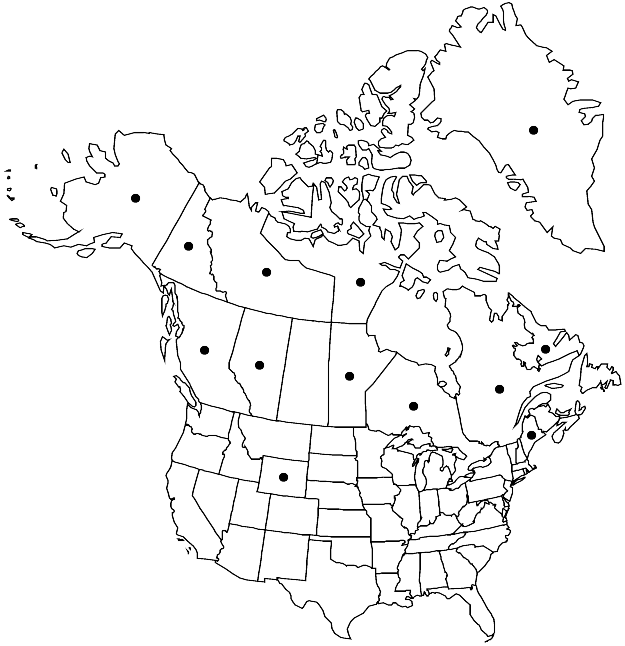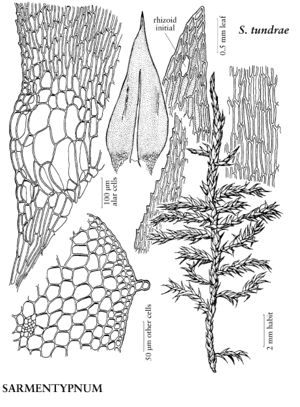Sarmentypnum tundrae
J. Hattori Bot. Lab. 100: 133. 2006.
Plants medium-sized, green, yellowish, or brownish. Stems with branch and shoot apices not pencil-like; epidermal cells not differentiated; axillary hair distal cells 1 or 2, hyaline when young. Stem leaves ovate or ovate-triangular, gradually narrowed to apex, slightly falcate or straight, slightly concave; base broadly long-decurrent; margins denticulate proximally, entire or sparsely denticulate distally; apex broadly acuminate; costa ending 2/3–9/10 leaf length; alar region from margins almost to costa.
Habitat: Mineral and somewhat nutrient-rich fens, shores, submerged in lakes
Elevation: low to high elevations (0-1600 m)
Distribution

Greenland, Alta., B.C., Man., Nfld. and Labr. (Labr.), N.W.T., Nunavut, Ont., Que., Yukon, Alaska, Maine, Wyo., n Eurasia.
Discussion
Sarmentypnum tundrae shares no morphological apomorphies with other species in Sarmentypnum or with species of Calliergon. The species is here included in Sarmentypnum from molecular evidence. Sarmentypnum tundrae differs from all other members of the genus by its long and more or less broadly decurrent stem leaves. Additional features that aid in separating this species from S. exannulatum and S. procerum are the rather weakly falcate stem leaves and the total lack of red pigment. The leaf apex is often hooked. Sarmentypnum tundrae has been incorrectly reported from Australia.
Selected References
None.
